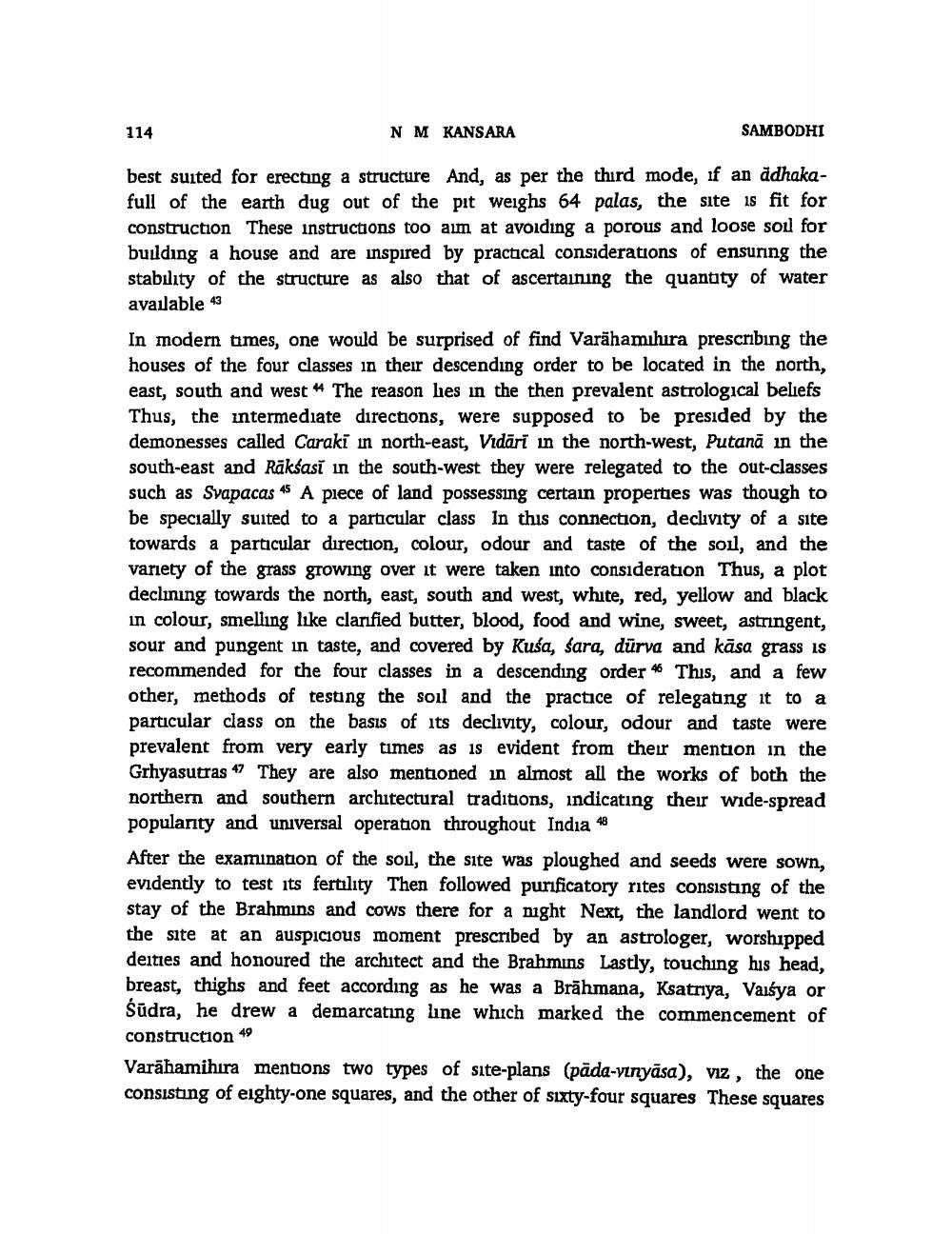________________
114
NM KANSARA
SAMBODHI
best suited for erecting a structure And, as per the third mode, if an adhakafull of the earth dug out of the pit weighs 64 palas, the site is fit for construction These instructions too aim at avoiding a porous and loose soul for building a house and are inspired by practical considerations of ensuring the stability of the structure as also that of ascertaining the quantity of water available 43 In modern times, one would be surprised of find Varāhamıhıra prescribing the houses of the four classes in their descending order to be located in the north, east, south and west 4 The reason lies in the then prevalent astrological beliefs Thus, the intermediate directions, were supposed to be presided by the demonesses called Caraki in north-east, Vidāri in the north-west, Putana in the south-east and Rākšasi in the south-west they were relegated to the out-classes such as Syapacas 45 A piece of land possessing certain properties was though to be specially suited to a particular class In this connection, declivity of a site towards a particular direction, colour, odour and taste of the soil, and the variety of the grass growing over it were taken into consideration Thus, a plot declining towards the north, east, south and west, white, red, yellow and black in colour, smelling like clarified butter, blood, food and wine, sweet, astringent, sour and pungent in taste, and covered by Kuśa, śara, dūrva and kasa grass is recommended for the four classes in a descending order 46 This, and a few other, methods of testing the soil and the practice of relegating it to a particular class on the basis of its declivity, colour, odour and taste were prevalent from very early times as is evident from their mention in the Grhyasutras 47 They are also mentioned in almost all the works of both the northern and southern architectural traditions, indicating their wide-spread popularity and universal operation throughout India 48 After the examination of the soil, the site was ploughed and seeds were sown, evidently to test its fertility Then followed purificatory rites consisting of the stay of the Brahmins and cows there for a night Next, the landlord went to the site at an auspicious moment prescribed by an astrologer, worshipped deities and honoured the architect and the Brahmins Lastly, touching his head, breast, thighs and feet according as he was a Brāhmana, Ksatrya, Vaisya or Śūdra, he drew a demarcating line which marked the commencement of construction 49 Varāhamihira mentions two types of site-plans (pāda-vinyāsa), viz , the one consisting of eighty-one squares, and the other of sixty-four squares These squares




